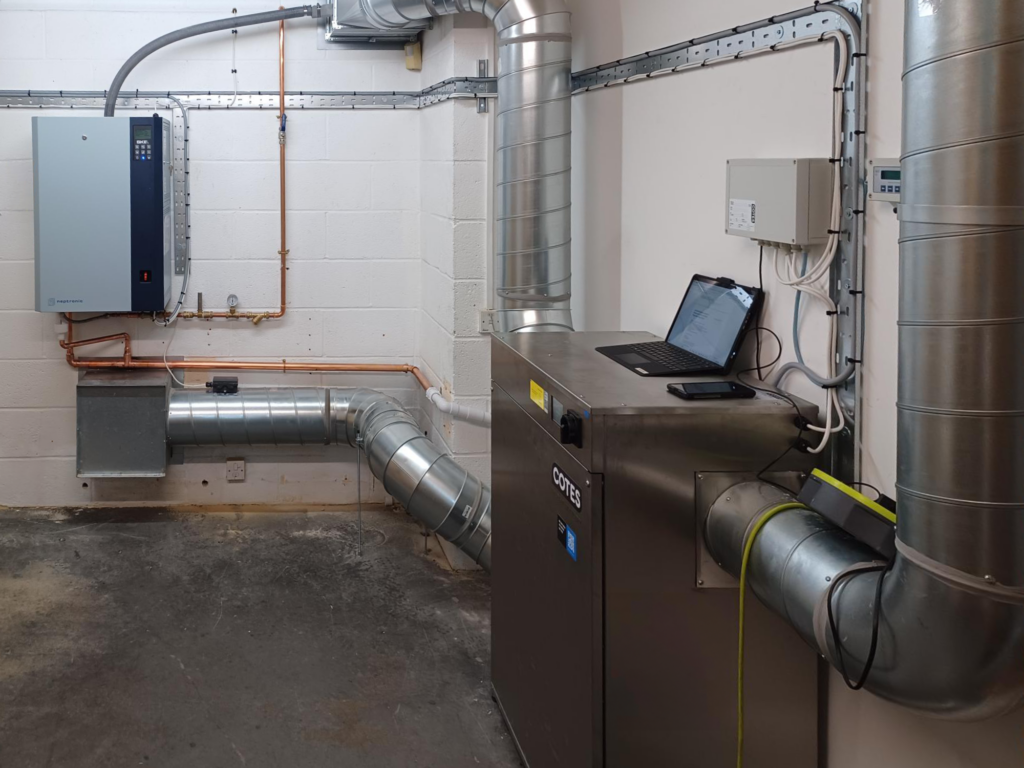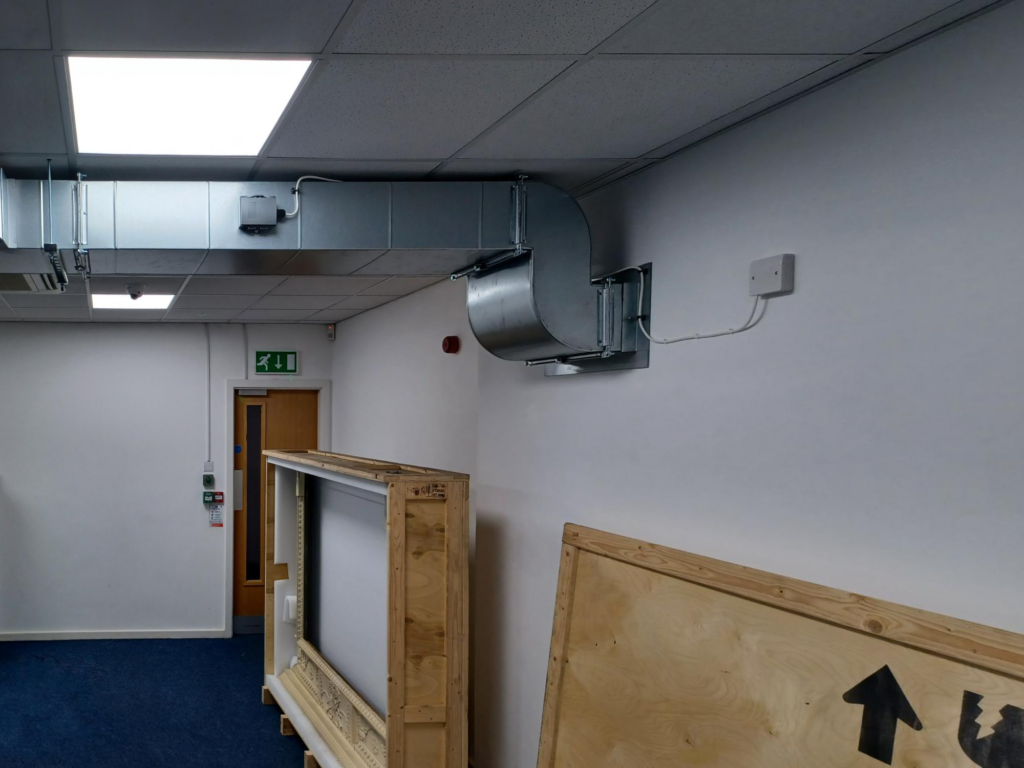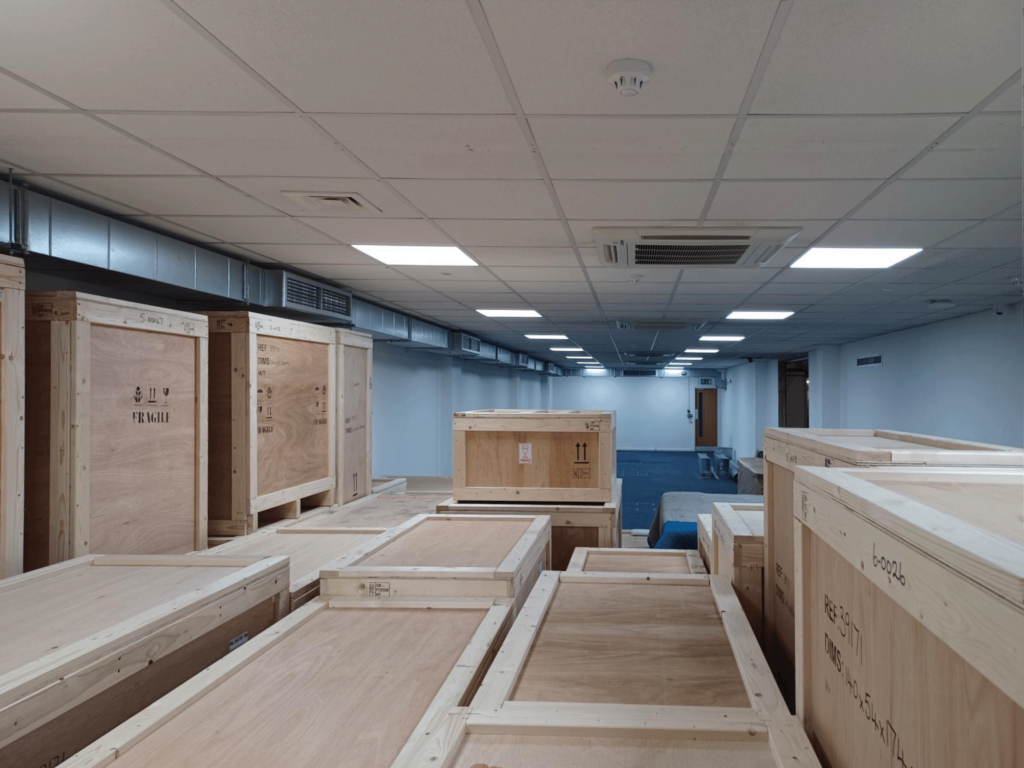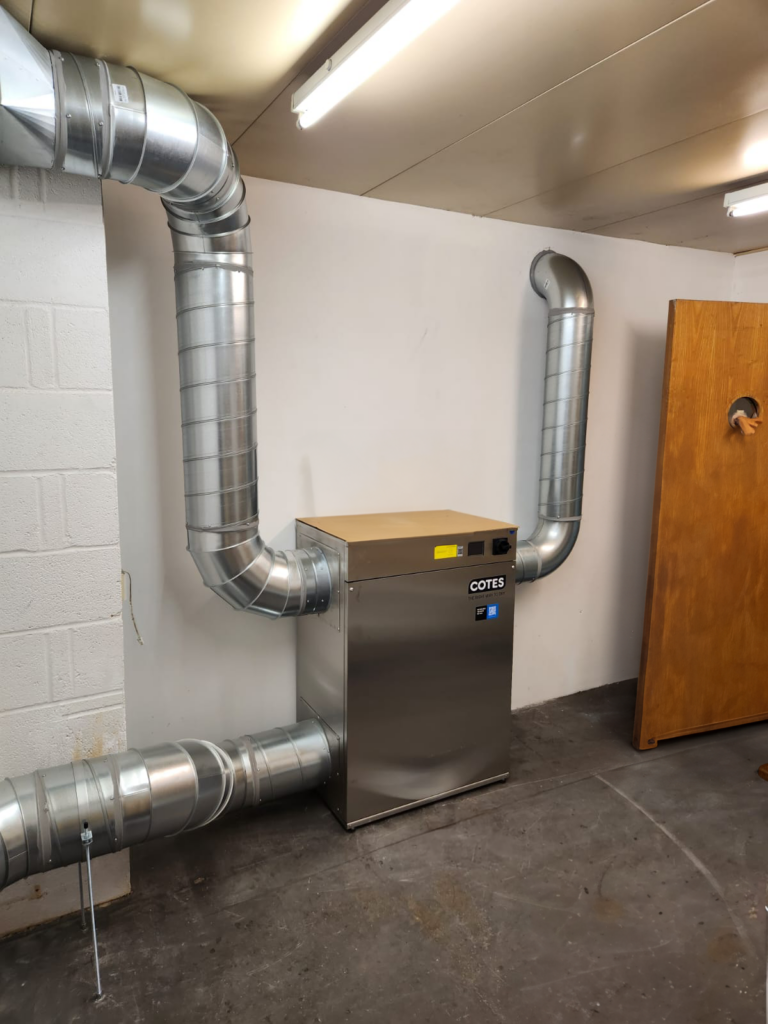Client
Air Sea Packing is an International white-glove shipping and logistics company. Their bespoke services are used by clients worldwide who need to transport and store valuable items, from private residences to fine art galleries, interior and architecture design firms, and auction houses. Items such as musical instruments, precious artworks, and antiques are often kept in controlled environmental conditions to prevent damage and deterioration.
What Was The Problem?
With offices located just outside of Oxford, Air Sea Packing was transforming an office within a warehouse into a fine art storage facility. In fine art storage facilities, multiple factors can create fluctuations in temperature and humidity, such as the structure of the building, changes in weather, and air changes from people inspecting the store.
The storage room had dimensions of approximately 27m x 6m x 2.7m, with a few conditions that must be factored into the design considerations. This included an existing fresh air system bringing 800m3/hr of air into the room, which caused fluctuations in humidity, and an additional 6 ceiling A/C cassettes. The A/C cassettes had 22.05 kw potential of cooling, which removed 14.85kg/h of moisture. There was also one set of doors to the storage room that would normally be accessed once a week. The doors opened into a warehouse with an existing HVAC system, with no extreme summer or winter temperatures transferring from the warehouse to the storage room.
After a site visit from Simon Marshall, our humidity control expert, it was also discovered that the facility suffered from high humidity during the summer months. This meant that the facility needed a humidifier and a dehumidifier to remove excess moisture from the air during warm weather.
Another challenge arose when it became clear that the recommended units would not fit in the nearest plant room, and an alternative solution was needed.
How Did We Find The Solution?
The client initially requested the equipment to be installed within the art storage space. However, from extensive experience working with fine art stores, Simon recommended placing the units outside the room and bringing the conditioned air into the room through a duct. This would allow engineers to service and maintain the unit without entering the area, reducing the risk of potential damage if a leak were to occur.
To stabilise the room conditions, Simon advised having the fresh air system disabled, which would allow precise control of the air entering the room. Then, after factoring in the existing air conditioning units, the frequency of the doors being used, and the adjoining room conditions, Simon recommended installing a single humidifier (Neptronic SKE4-10) to increase humidity during the colder months.
For dehumidification, a Cotes C35 4.5 PL C was suggested to handle the high humidity levels in the summer, which would help to maintain a stable environment year-round for art storage. The combined humidification and dehumidification system would allow Air Sea Packaging to keep humidity levels at their target humidity of 50% RH with a swing of +/- 10% RH, within a temperature range of 17-22°C. This would ensure that the materials in artwork, such as canvas, wood, and paper, do not suffer from expansion and contraction. It would also prevent mould growth, canvas warping, and paint flaking, which are all common issues from inadequate humidity control.
To solve the problem of fitting the units in the nearest plant room, Simon proposed to relocate them to a larger plant room on the opposite side of the warehouse, which had enough space to accommodate both units. Humidity Solutions also installed ductwork running from the plant room to distribute the wet/dry air into the art storage space.



What Was The Result Of Regulated Humidity?
After completion of the project, Air Sea Packing now has the ideal environmental conditions to store fine art 24/7, 365 days a year. When humidity levels are too low, the humidifier turns on to add moisture to the space, and when humidity is too high, the dehumidifier switches on to remove excess moisture. This ensures that valuable artwork is consistently protected from environmental damage, and Air Sea Packing clients can be confident in the level of protection their valuables are receiving.
With the units installed in a different plant room instead of directly inside the storage area, engineers have easy access to the units to perform essential servicing tasks without entering the room. The conditioned air is ducted into the space and distributed throughout the room via extensive ductwork, allowing the conditioned air to seamlessly flow between racking and shelving units evenly.
A resistive humidifier was chosen for this project as the ongoing maintenance costs are much lower compared to an electrode humidifier, which uses costly disposable cylinders. Resistive humidifiers, such as the Neptronic SKE4-10, feature a stainless-steel evaporation chamber to heat water to a boiling point. These chambers incorporate flush cycles to minimise scale build-up and can be easily removed, cleaned, and reused. As a result, resistive humidifiers are a more cost-effective and environmentally friendly option over their lifetime. This option was also recommended by Simon, due to the area being located within a hardwater area.
In terms of energy savings, thorough market research was conducted comparing the energy output of similar dehumidifiers. The Cotes C35 4.5 PLC C was evaluated against its closest competitor from the manufacturer, DST. After analysis, it was revealed that Air Sea Packing would save £1,971 annually if the dehumidifier operated for 12 hours a day. This further underscores the long-term value of this solution.
Do you need a humidity control solution? Contact us to find out how we can help with your project.
